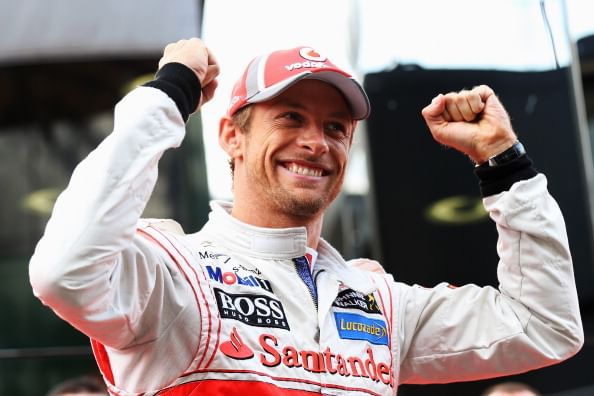Just a few days have passed since the Chinese Grand Prix and McLaren are already in deep preparation for round four of the championship in Bahrain. Political turmoil in the Gulf state has been the backdrop to the build-up to this season’s Grand Prix as well, but the teams’ and drivers’ focus will be on what happens on the circuit. The Sakhir circuit, completed in 2003, is designed by renowned F1 architect Herman Tilke, and was the first Formula 1-spec track to be built in the Middle East. It is located 30km south west of Bahrain’s capital city Manama.
The 5.4 km layout is a medium-speed track dominated by long straights and tight corners, demanding strong brake performance as drivers slow from 315 km/h to 65 km/h in just three seconds and 130 meters to negotiate Turn One. That’s a deceleration of around 4.5g. It’s also one of the most demanding tracks of the year in terms of longitudinal energy going into the tyres, especially under braking at turns 1 and 14, and traction in Turn 10. Bahrain is one of just three races on the Formula One calendar, apart from India and Korea, where McLaren still have to claim a win. The track itself is relatively smooth, although changeable wind and the surrounding desert means sand and dirt can often be blasted on to the track surface, making it slippery to drive on. There are some tricky medium-speed corners that require good car balance. Car set-up is a compromise between straight-line speed and cornering grip; and with ambient temperatures expected to exceed 35 degrees this weekend, teams will also need to be mindful of cooling. The abrasive asphalt, made from Welsh granite, means that Pirelli will be bringing their orange-marked hard and white-marked medium tyres – the same specifications as those used in the Malaysian Grand Prix last month. While tyres are defining the shape of this year’s championship, the dust here adds yet another variable to their wear and tear. The mix of high and low-speed sections also means that set-up is something of a compromise. Motorsport director Paul Hembery explains: “Bahrain was one of the very few circuits that was entirely new to us in competition last year, although we know it well from testing. It’s one of the most demanding tracks of the year for the tyres, mostly because of the high ambient and track temperatures. We expect about three stops per car, although we’ll have to wait to get some running in on Friday before we can look at the data and make a more accurate prediction. McLaren are optimistic, as the smooth track will again enable them to optimise their ride height in the final race before a major upgrade comes for Barcelona. We could definitely expect both Button and Perez to make it to the top 10 but it would definitely be a miracle to see them on the podium.
“The Sakhir circuit requires a good overall car balance. There are some tricky and technical low-speed changes of direction; you need to place the car really precisely at the corner entry in order to maximise traction at the exit. And there are also some high-speed sweeps – Turns Six and Seven, for example – and some fast corners, such as the uphill left-hander at Turn 11. You need a good front-end, but also good traction, to get the best from those corners.
“It’s a place where the grip levels can be quite hard to anticipate, and where the wind direction can play quite an important part in determining the car’s balance. The wind can affect top speed and cornering performance, so practice will be more important than ever in enabling us to take the best overall package into qualifying and the race.”
“The Bahrain Grand Prix circuit has plenty of run-off and a good combination of high- and low-speed corners. The challenge for the drivers comes from the constantly evolving nature of the corners, and dealing with the sand – which gets blown onto different areas of the track from the surrounding desert,” says Jenson Button, who led a few laps in China in the MP4-28
“With two DRS zones, I think we should see some decent racing: the two best overtaking opportunities are into the Turn One and Turn Four hairpins. They’re both good places to attack – you can force another driver onto the inside line and then attack on the exit, when they’re more vulnerable. The second DRS zone will mainly be used to close the gap down to the car in front, before attacking again along the pits straight,” said Sergio Perez.
“Bahrain marks the end of the opening fly-away leg of the 2013 world championship. That being the case, following on in quick succession from last weekend’s Chinese Grand Prix, we’ll look to consolidate our achievements in Shanghai with further solid points finishes this weekend. While the first three races haven’t been the easiest for us, there’s been a little progress at every round, and we’ll be looking for another improved showing, as well as the opportunity to increase our understanding of MP4-28, in Bahrain this weekend. The work that goes on at the track is only the tip of the iceberg, though. There’s been an incredible amount of effort expended back at the McLaren Technology Centre [Woking, UK], so as to ensure that the delivery of new parts, and the evaluation of fresh ideas, remain constant. I therefore want to take this opportunity to thank everyone who’s contributed to that work. Your efforts never go unnoticed, and the development trend is in the right direction,” Said Martin Whitmarsh – Team principal, Vodafone McLaren Mercedes.

